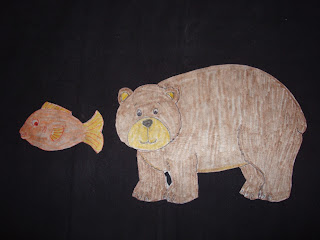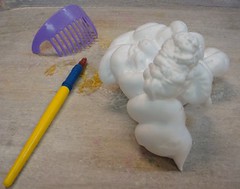There are many reasons for the "no characters" policy. One of the most important, from our view, is that a character limits the parameters of play. It's not as imaginative to act out a tv show or video as it is to create the setting and rules cooperatively. It also prevents children from practicing the social give and take that's required from purely imaginative play. Those are critical socials skills that lead to success in the elementary grades and beyond.
Here I'm going to quote something from Buy, Buy Baby: How Consumer Culture Manipulates Parents and Harms Young Minds
Children who spend time watching shows and playing with character-limited toys are not only not learning the important social lessons that they need to learn, but they are not spending as much time on more developmentally appropriate and "educational" activities. Characters are part of our culture that isn't really helping our kids get ready for school. In the case of things like Hannah Montana and High School Musical in preschool, they send the message to young children that they are allowed to behave like teenagers. I don't have anything against those pieces of entertainment and I personally think they have some good qualities, but I don't want a 4-year-old child to get the impression that the sort of behavior displayed by those characters is appropriate for him or her now.
Now don't take me for a character hater. I've watched my share of Little Einsteins, Dora, and Sesame Street. I've been known to say, "seatbelts buckled, everyone?" in my best Ms. Frizzle impersonation. I've got a fairy/princess lover for a daughter and a LEGO Star Wars obsessed son. But I don't do characters at school. And I'm cool with that.





















